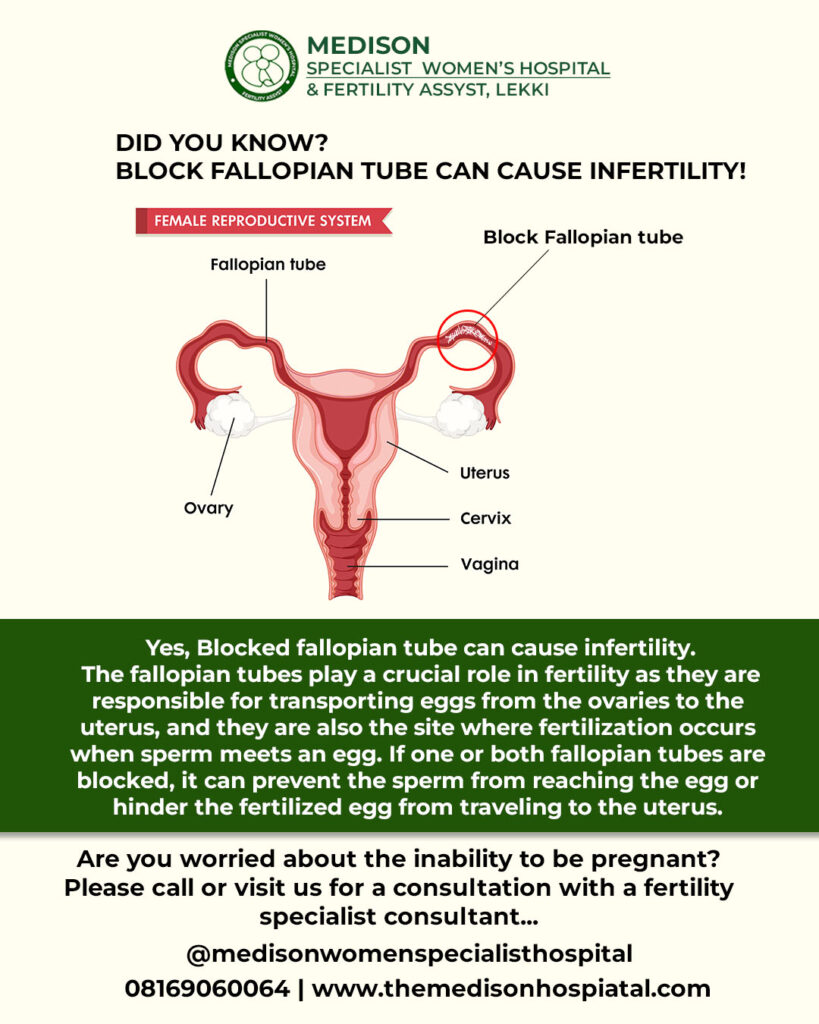Understanding and Managing Blocked Fallopian Tubes: Causes, Diagnosis, and Treatment Options
Introduction: Blocked fallopian tubes can present a significant obstacle for couples trying to conceive. The fallopian tubes play a vital role in fertility by transporting eggs from the ovaries to the uterus, where fertilization occurs. When one or both tubes become obstructed, it can hinder the fertilization process, leading to difficulties in achieving pregnancy. In this article, we will explore the causes, diagnosis, and treatment options for blocked fallopian tubes.
Causes of Blocked Fallopian Tubes:
- Pelvic Inflammatory Disease (PID): One of the most common causes of tubal blockages, PID occurs as a result of sexually transmitted infections (STIs) such as chlamydia or gonorrhea. Inflammation from these infections can cause scarring and blockage of the fallopian tubes.
- Endometriosis: Endometrial tissue, which normally lines the uterus, can implant and grow outside the uterus, including on the fallopian tubes. This can lead to adhesions and blockages.
- Previous Surgeries or Infections: Past surgeries in the pelvic area, such as for appendicitis or ovarian cysts, can cause scar tissue that may obstruct the fallopian tubes. Infections in the pelvic region can also result in scarring and blockage.
- Tubal Ligation: A surgical procedure for permanent contraception, tubal ligation involves sealing or cutting the fallopian tubes. Although it is intended as a permanent method of birth control, in some cases, women may desire a reversal of the procedure.
Diagnosis of Blocked Fallopian Tubes:
- Hysterosalpingogram (HSG): This X-ray procedure involves injecting a contrast dye into the uterus and fallopian tubes. The dye helps identify any blockages or abnormalities in the fallopian tubes, which can be visualized on X-ray images.
- Laparoscopy: A minimally invasive surgical procedure, laparoscopy allows direct visualization of the fallopian tubes and surrounding structures using a small camera inserted through a small incision in the abdomen. It can help identify blockages, adhesions, and other abnormalities.
Treatment Options for Blocked Fallopian Tubes:
- Fertility Medications: In some cases, fertility medications such as clomiphene citrate or gonadotropins may be prescribed to stimulate ovulation and increase the chances of egg release from the ovaries. This can potentially bypass the blocked fallopian tubes and allow for natural conception.
- Surgery: In certain situations, surgical interventions may be considered to correct blockages or remove scar tissue. Procedures such as tubal reanastomosis or salpingectomy (removal of the blocked tube) may be performed, depending on the specific circumstances.
- In Vitro Fertilization (IVF): IVF is a widely used assisted reproductive technology that involves retrieving eggs from the ovaries, fertilizing them with sperm in a laboratory, and transferring the resulting embryos into the uterus. IVF bypasses the fallopian tubes altogether, making it an effective option for couples with blocked tubes.
- Tubal Catheterization or Balloon Dilation: These minimally invasive procedures involve the insertion of a catheter or balloon into the blocked fallopian tube to open it up and restore its normal function. These techniques can be successful in select cases.
Conclusion: Blocked fallopian tubes can present a significant challenge for couples trying to conceive. However, with advances in medical technology and fertility treatments, there are options available to overcome this hurdle. Proper diagnosis, along with consultation with a fertility specialist, can help determine the most suitable treatment


4 Comments
Florence kokwe
Plz l need help from you
PEGGI Agbor
Can it be treated without surgery
Adenike Abibat
Please I need your help
The Medison Hospital
Hello, kindly contact Us http://+2342081620906200064/